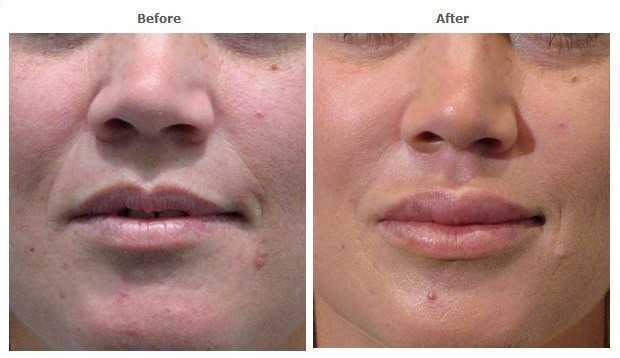Nasal Labial Fold
Nasolabial folds, commonly known as “smile or laugh lines” are the deep lines or the indented skin between the corner of the nose and corner of the mouth.
The cause of nasolabial folds includes:
- Age
- Excessive exposure to the sun
- Hereditary factors
With age and excessive exposure to sunlight, the loss of skin elasticity and firmness is related to the breakdown of collagen (protein responsible for skin tightness). This causes the skin to become loose, appear saggy, and to form folds.
The treatment options for nasolabial folds include
Non-invasive procedures are performed to correct any textural irregularities by plumping and smoothing out the skin depression. They work by restoring facial volume and filling out wrinkled or uneven areas of the face, thereby bringing an immediate vibrant and youthful appearance to one’s face without surgery.
With aging, the skin becomes more susceptible to wrinkles and sagging. These procedures do not stop the aging process but restore the age related volume loss in the face providing a significant facial rejuvenation.
They are used to correct cosmetic concerns including smoothing wrinkles, lines and folds.
Some of the potential risks of the treatment include the formation of lumps which can be massaged and eventually resolve.
The Procedure
The procedure is performed on an outpatient basis and involves the following steps:
- The areas to be treated on your face are marked and cleaned with an antibacterial agent.
- Topical anaesthetic agents may be used to numb the areas to be treated. The treatment is then administered.
- The marks are then washed away and cold packs are applied immediately.
- Make-up may be applied that allows you to resume your daily activities immediately.
The best procedure for treatment is selected based on your age, condition of your skin, amount of sun damage and genetics.
Risks and complications
Though non-invasive nasolabial treatments are very safe, they are associated with a few complications. Some of these include allergic reaction, bruising at the site, temporary numbness, redness, swelling, pain, skin death, itching and rashes on the treated area. Some of the potential risks include the formation of lumps that eventually resolve on its own or with the help of massage.
You will require a pre-treatment allergy test.
Recovery
- The procedure provides immediate results and requires very minimal downtime, allowing you to return to normal activities and work, directly following the treatment.
- You may be instructed to avoid strenuous activities and excessive exposure to sunlight and heat the rest of the day following treatment.
- You may experience swelling and bruising at the site that will fade away in a few days.
Treatment Outcome
The results are temporary lasting from a few months to one year. For better results, repeated treatment sessions are encouraged.
Facelift Surgery
Facelift, also known as meloplasty or rhytidectomy, is a surgical procedure that tightens and removes drooping facial skin. This surgical tightening of the facial muscles improves the tone of the skin. These procedures also involve the removal and repositioning of excessive fat present beneath the skin.
Face lifts are more commonly performed in the age group between 40-65 years, but people who are younger or older may opt for this surgery as well. The results of a facelift usually last for 5-12 years.
Purposes of face lift surgery
The objective of face lift surgery is as follows:
- Reduces the signs of ageing
- Improves the contours of the face and neck
- Make the skin younger and smoother
- May be combined with other cosmetic surgical procedures such as brow lift, eyelid surgery or skin reconstruction
- May be undertaken along with non-surgical treatments such as chemical skin peel, dermabrasion or skin resurfacing
Face lift surgery does not involve the alteration of the bone structure of the face.
Procedure
Face lift surgery is performed under general anaesthesia or local anaesthesia. The type of facelift surgery depends upon the age, type of skin (dry, thick etc.), condition and requirement of the individual person.
Depending upon the general health and the extent of the procedure, facelift surgery can be performed with a short stay in the hospital. In some cases, a small, thin tube may be temporarily placed under the skin for the drainage of excessive fluid.
Post-operative care
The basic post-operative instructions following facelift surgery include:
- You can have a light meal and can drink fluids 2-3 hours after the surgery
- Elevate your head while sleeping to reduce swelling
- Take prescribed medications for pain and swelling
- Rest for a few weeks as recommended
- Avoid heavy lifting, strenuous exercise, swimming and strenuous sports
Risks and complications
Face lift surgery is generally a safe procedure. Smokers are at increased risk of complications. The associated risks and complications with face lift surgery are as follows:
- Bleeding
- Infection
- Allergic reactions
- Formation of large blood clot or hematoma
- Pain and numbness
- Bruising and swelling
- Scar formation
- Hair loss around the scar
- Loss of skin
- Deformity of the earlobe
- Damage to the facial nerve
- Revision surgery may be needed for correcting any complications.

